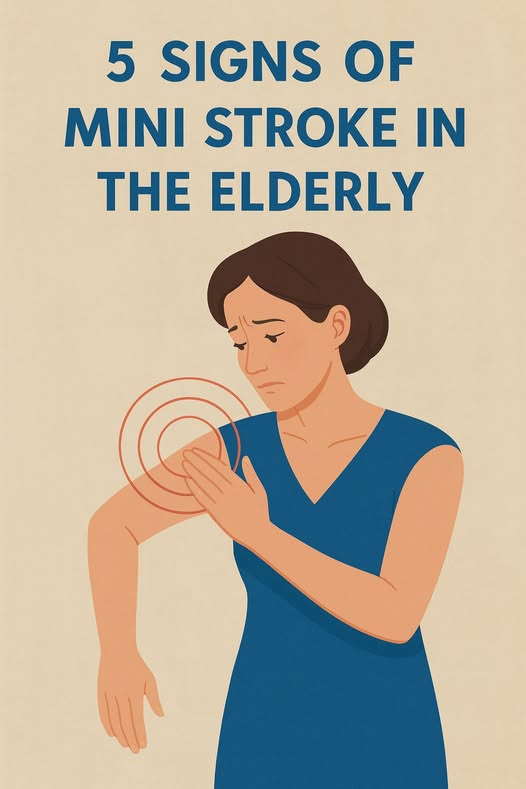But ignoring them is dangerous.
TIAs happen when blood flow to a part of the brain gets temporarily blocked. The blockage clears on its own, which is why the symptoms fade, but the underlying problem doesn’t magically resolve. Doctors see TIAs as an urgent red flag. Many seniors who experience a TIA suffer a full stroke within days or weeks if they don’t receive evaluation and treatment.
Understanding why these events happen is the first step in preventing something far worse. Seniors are especially vulnerable when they have conditions that quietly damage the blood vessels over time—high blood pressure, diabetes, high cholesterol, heart disease, or hardened arteries. Lifestyle habits like smoking, poor diet, lack of exercise, and chronic stress layer on additional risk.
For caregivers, recognizing this isn’t about living in a constant state of worry. It’s about knowing what matters and keeping an eye on changes that, if caught early, can save a life.
The tricky part is that TIAs don’t always look dramatic. They often present as brief, confusing glitches—small malfunctions in speech, memory, vision, or movement. Some seniors might feel pins and needles on one side of their body. Others might look like they’re suddenly drunk or disoriented. They may complain that their vision blurred out of nowhere or that they suddenly couldn’t find the right words.
The most common signs include:
- Sudden numbness or weakness on one side of the face or body
- Trouble speaking or understanding speech
- Vision problems in one or both eyes
- Sudden dizziness, imbalance, or difficulty walking
- A strange, intense headache that appears without cause
- Confusion or trouble thinking clearly
These symptoms can last seconds or minutes. Sometimes the only clue is that your loved one looks frightened or “foggy” and then snaps back to normal. They may dismiss it as being tired, dehydrated, or just “one of those things.” But a TIA is never “just one of those things.”
If you witness any of these signs, the most important thing you can do—the thing that makes the biggest difference—is to get immediate medical help. Even if the symptoms vanish before you reach for your coat. Even if they insist they’re fine. Even if they don’t remember what happened.
Speed matters. A doctor’s evaluation after a TIA can reveal clogged arteries, irregular heart rhythms, or other issues that can be treated before they lead to a full stroke. Treatment might include medication to thin the blood, control blood pressure, or stabilize cholesterol. It can also involve lifestyle adjustments—healthier food choices, quitting smoking, managing stress, getting more movement, and staying consistent with medical appointments.
Many seniors resist going to the hospital, often because they don’t want to feel like a burden or they’re afraid of “making a fuss.” But TIAs are silent alarms. They don’t happen for no reason, and ignoring them lets the problem grow in the dark.
As a caregiver, it helps to watch for patterns: Are these spells happening more often? Do they seem tied to stress, exertion, or medications? Are they accompanied by complaints like headaches, chest discomfort, or fatigue? Understanding the full picture gives doctors more information to work with.
At the same time, don’t underestimate the emotional side of all this. Seeing a loved one slip in and out of clarity can be frightening. Seniors know something is wrong even if they pretend otherwise, and they feel the fear too. Sometimes what they need most is calm presence—someone to sit with them, stay observant, and take action when necessary.
The good news is that when a TIA is recognized and treated properly, the outlook improves dramatically. Preventing a major stroke isn’t guesswork; it’s about catching the warning signs and following through on care. Many seniors go on to live healthy, active lives by making manageable changes and staying on top of their health.
Caring for aging family members isn’t just about organizing medications or keeping up with appointments. It’s about noticing shifts—big or small—before they become crises. It’s about trusting your instincts when something feels off. And most importantly, it’s about acting quickly when the brain sends even the faintest distress signal.
A TIA might last only a moment, but taking it seriously can change everything. By learning to spot the signs, staying alert to changes, and encouraging healthier habits, you’re giving your loved one something priceless: a better chance at staying independent, safe, and confident as they age.
Small moments matter. Brief symptoms matter. And your vigilance—the simple act of paying attention—might be the reason a loved one gets to enjoy many more good years ahead.

